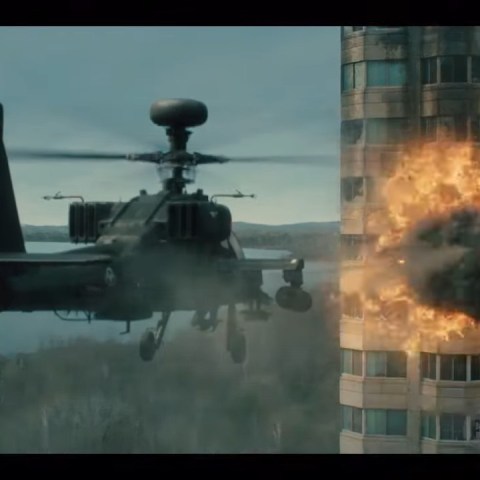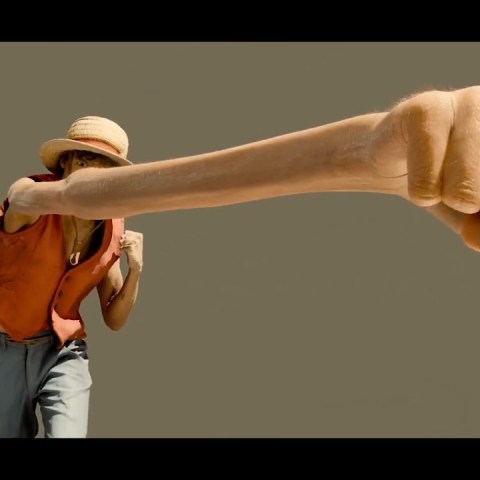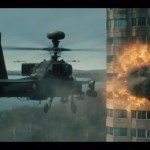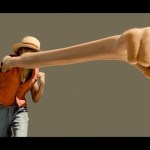Behind the scenes on Fantastic Beasts: The Secrets of Dumbledore with Framestore.
While rescuing his brother Theseus (Callum Turner) from a secret German wizarding catacomb-like prison, Newt Scamander (Eddie Redmayne) encounters a lava-spewing giant Manticore and a host of baby Manticores that look like scorpions. Using
Here, production visual effects supervisor Christian Manz explains how Framestore helped realize this entire sequence in director David Yates’ Fantastic Beasts: The Secrets of Dumbledore, including moments where Newt and Thesues employ limbic mimicry to baffle the Manticores. Redmayne even collaborated with the visual effects team to establish the right look for the movements.
b&a: When you are reading the script, when you are breaking something like that down, what are the first things you’re thinking about, when you have a character like the Manticores to achieve?
Christian Manz: When we were looking at something like the Manticores as creatures to design, the first thing were were thinking of, in the spirit of the rest of the creatures that we’ve done in the Beasts franchise was, how were we going to make something that is like a Greek mythological creature but also an authentic creature. Part of the remit we’ve been given on all the Beasts films is to make audiences believe that they’re witnessing a living, breathing animal. A lot of those mythological beasts, particularly Greek ones, tend to be half-horse, half-human, half-whatever, and a Manticore is part-lion with a human face, and part scorpion.
Our approach really was to think about it like this: maybe when a human first saw a giraffe, they said, ‘Hey that’s a horse and something else I don’t recognize,’ and they came back and drew it and actually it turned into something else. We went down that route with the Manticore of, how could we change the behaviour of something that is, effectively, a giant, horrible insect?
One of the briefs David gave us from the very beginning of the sequence was for it to be sort of German expressionist: absurd, but, at the same time, horrible. We’d never really done a horrible creature that Newt knows about yet. Here, it’s going to kill him. It was also to have something massive, which we’d never really done before.
b&a: But that’s interesting, because it is massive, but you don’t really see it.
Christian Manz: Yes, we had to design the massive one to imagine the story. Because you have to go into its full anatomy and everything to work out what it looks like. And also, different versions of the script have you seeing it maybe more than you ended up doing eventually. We also fall into that thing that, actually, if you want it to be scary, you want to see less of it. Then, in keeping with a lot of the other creature stuff, we thought, well, if it’s massive, you’re not going to see all of it, because it’s massive. The more impossibly wide you frame the creature so that you can see it in its entirety, the more CG it would appear. So, you really want to put yourself with the characters, and the audience with them. And therefore, it’s a bit more scary, because you think you are going to be killed as well.
Alongside designing the creature, I worked with Giles Asbury, who was the storyboard artist, and David, where we’d sit in a room for two or three hours, and just chat the script over, and then begin beat-sheeting out ideas, and growing the action. It had to hit David’s beats of being funny, but scary, and just weird. Stuff like, ‘Oh, maybe the lamps that they’ve got are actually bugs, and even though this creature’s massive, maybe it’s scared of those bugs. So when they’re smashed, that’s the moment when people are killed.’ And then, the babies eat what’s thrown back at them. David loved the idea of this regurgitating something. We had a logic to its system of how it’s living down there. And of course, David always wanted the cut after the sequence, where you cut to a lobster on a plate in the Great Hall. It’s really nice watching in a cinema and hearing everyone always chuckle at that.
The main driver was scorpions, for the look. When we looked at the insectoid thing, because we were looking at a lot of microscopic images of insects as well, because they tend to be quite horrible. We started posing it more like it was a multi-limb scorpion, that when it’s sat, when you come across it, it’s sat and it’s almost like a lion, because it’s got lots of spines that look like a mane. When’t it’s posed and sat there, and you think, ‘Oh, it’s a lion.’
And it’s kind of got this weird face. We looked at African masks, and beetles. We were like, ‘What if somebody had seen this thing, and then drawn that as a face, and then that had got changed as they drew it.

b&a: What was the animation testing process like?
Christian Manz: Well, firstly, Dan Baker in the Framestore art department came up with a design that David really liked. He’d get it into a sculpt and then we could then pass that to Nathan McConnell, who was our animation supervisor, who was working with us at the studio. Ben Loch and Stéphane Nazé were Framestore’s visual effects supervisors in London and Montreal respectively.
Then with the help from The Third Floor previs team, we built an asset that they could begin playing with. The concept had so many limbs and we had to say, ‘How’s that actually going to work?’ So, that honed down the design into having six arms and three tails. And we always put things into vignettes rather than just a normal run cycle.
There were some really great references that Nathan found of scorpions, but then obviously the biggest thing from the script was the limbic mimicry. That is, Newt’s posed walk, which would make the creatures benign. For that, we’d come up with some walks, and then show those to Eddie Redmayne in pre-production and he was like, ‘Oh yeah, they’re cool.’
Then he went away, worked with his movement coach, Alex Reynolds, looking at what we had done. And then I got back lots of little videos of things. He’d say, ‘What do you think of these?’ And then we were like, ‘Oh, well maybe this one works,’ and then we’d animate. And then he went back and did some more and then brought Callum Turner as Theseus in, too.
b&a: That’s fascinating because I reckon most people would’ve thought Eddie just performed something on set and you then animated to match.
Christian Manz: It was a process, there were some very ‘Ministry of Silly Walks’ moments. Some were like, ‘Is it too bonkers?’ In the end, the characters had to work together and we wanted it to be funny. You could always hear David chuckling in the tent when Eddie suddenly throws a pose and holds it. The reason why it works as well is Eddie is incredibly committed to making that work. He cares about the character, cares about what we are doing and making it work together. And that makes it all believable. The final animation, led by Animation Supervisor Aulo Licinio in Framestore’s Montreal studio, was incredibly intricate and nuanced, which was the real icing on the cake.
b&a: What set did the actors perform on?
Christian Manz: We had a massive set. The actual prison, the main tunnel of the prison, and the rotunda, was a massive five-storey set within a sound stage. Stephane Naze and the Framestore Montreal team still needed to extend this – but once we got into the climactic chase there was much less physical set and therefore a vast amount of digital environment that could then be smashed and melted by the Manticore.

b&a: How did you plan out the sequence?
Christian Manz: I was working with The Third Floor, doing the previs and we previs’d that whole chase. We were trying to think of how to make it scary, funny and different. Immediately, I was like, ‘What if we melt the rock, they can be molten, when it spits venom?’ And that way, too, we could see, in terms of lighting, since we were suddenly in these black tunnels. George Richmond, the DP, had very much gone for the bold move of just lighting mainly from those bug lanterns. So, of course, as soon as the lanterns were gone, we needed some other lighting.
Actually, for those bug lanterns, we did some camera tests to get the right brightness out of them. It was all battery operated in the end, which is great now with what you could do with LEDs. It was battery operated but still controlled from the lighting desk. We agreed to a rhythm that we’d come up with the light, but then all of the lit sections of the lanterns were completely replaced by Framestore’s Montreal team to add the animated bugs and enhance the interactive light – a huge amount of detailed comp work.
b&a: For on-set shooting, were any kind of stand-ins used for the Manticores?
Christian Manz: We had a stinger tail made by Stitches and Glue and we had four puppeteers on set. It wasn’t necessarily in all the takes, but it certainly gave the size and scale of the thing. And we also had a crazy ‘tube’ thing as an antenna that initially comes up to Newt and sniffs him out.
For the baby Manticores we had trusty old foamcore with cut-outs at the right scale dotted around. We only had five or six of them, but Rob Duncan, our on-set supe, put out a ton of tracking markers, too. We knew that they weren’t necessarily interacting with them directly, but it was really important that the actors were looking at the right place.


















